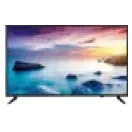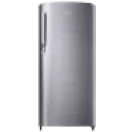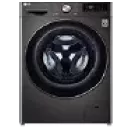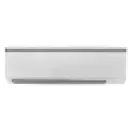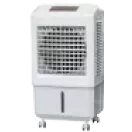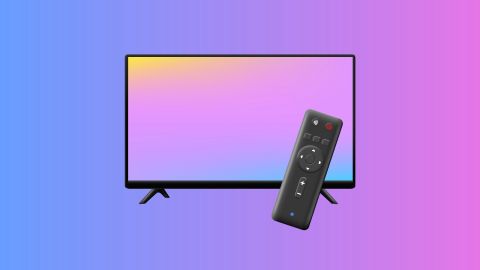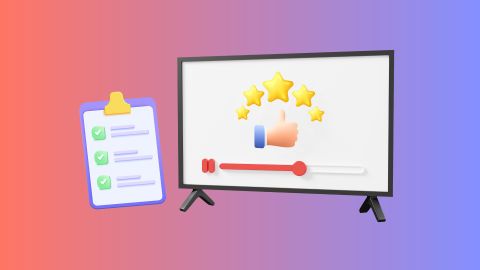When considering cooling solutions, it is natural to weigh the pros and cons of air coolers versus an air conditioner. While both aim to lower the temperature, they operate on fundamentally different principles. Air coolers use the evaporation of water to cool the air, making them more effective in dry climates. They generally consume significantly less power than an air conditioner and are a more budget-friendly option upfront. However, their cooling capacity is limited, and they can increase humidity levels.
On the other hand, an air conditioner uses a refrigerant cycle to cool and dehumidify the air, offering more significant temperature reduction and comfort, especially in humid conditions. This enhanced cooling comes with a higher power consumption compared to air coolers. Understanding the energy usage of an air conditioner, particularly a high-capacity unit like a 2-ton AC, helps consumers anticipate running costs and make informed choices based on their needs and budget.
Smart shopping starts here: Explore exclusive offers and pair them with affordable Easy EMIs for a rewarding shopping experience.
The role of room size in AC power consumption
The size of your room plays a significant role in determining the efficiency and power consumption of your AC. A 2-ton AC is generally designed to effectively cool larger spaces. Using it in a smaller room can lead to frequent cycling of the compressor, which can actually increase energy consumption rather than decrease it. Choosing the right capacity AC for your room size ensures optimal cooling and efficient power usage.
| Room size (approximate) |
Suitable AC capacity |
Impact on 2-ton AC power consumption |
| Up to 250 sq. ft. |
1-ton or 1.5-ton |
Less efficient, potential for higher energy use due to cycling |
| 250 - 400 sq. ft. |
1.5-ton or 2-ton |
More efficient operation |
| 400 sq. ft. and above |
2-ton or higher |
Designed for this space, optimal efficiency |
For those looking for reliable options, Samsung ACs can provide a range of models suitable for different room sizes and energy efficiency needs.
Key factors affecting your 2-ton AC’s power consumption
Several factors can influence how much power your 2-ton AC consumes and, consequently, your monthly electricity bill.
Temperature settings: Lowering the temperature significantly increases the workload on the compressor, leading to higher energy consumption. Setting a comfortable temperature (around 24-25 degrees Celsius) is generally more energy-efficient.
Insulation: Poor insulation in your room allows cool air to escape, forcing the AC to work harder and consume more power to maintain the set temperature. Proper insulation of walls, windows, and doors is essential.
Frequency of use: The more frequently and for longer durations you use your AC, the higher your overall power consumption will be.
Maintenance: Regular maintenance, such as cleaning or replacing air filters, ensures the AC runs efficiently. Dirty filters restrict airflow, making the unit work harder.
AC type (inverter vs. non-inverter): An inverter AC is generally more energy-efficient than a non-inverter AC. Inverter technology allows the compressor to run at variable speeds, adjusting cooling output based on the room's temperature, thus saving energy.
2-ton AC power usage
Understanding the typical power consumption of a 2-ton AC can help you estimate your energy costs. However, actual usage can vary based on the factors mentioned earlier.
| Metric |
Approximate Power Consumption |
| Per Hour |
1.5 to 2 units (kWh) |
| Per Day (8 hours) |
12 to 16 units (kWh) |
| Per Month (30 days, 8 hours/day) |
360 to 480 units (kWh) |
When considering a window AC in the 2-ton capacity, keep in mind that power consumption will vary based on its energy efficiency rating and usage.
How Star ratings reflect on your power usage
The Bureau of Energy Efficiency (BEE) star rating system in India provides a clear indication of an AC's energy efficiency. Higher star ratings (e.g., 5 Star) signify greater energy savings. These ratings are based on the Indian Seasonal Energy Efficiency Ratio (ISEER). A higher ISEER value means the AC consumes less power for the same cooling output compared to a lower-rated model.
When purchasing a portable AC, a window AC, or a split AC, paying attention to the star rating can have a substantial impact on your long-term electricity bills. While a higher-rated AC might have a slightly higher upfront cost, the savings in power consumption over its lifespan can be significant. For example, a 5 Star rated AC will consume considerably less electricity than a 3 Star rated AC with the same cooling capacity. Therefore, considering the star rating is a smart way to manage your energy costs associated with cooling your home.
Power and cost saving tips for better AC usage
- Set the Right Temperature: Maintain a temperature of around 24-25 degrees Celsius. Every degree lower can increase energy consumption by about 6%.
- Use Ceiling Fans: Ceiling fans help circulate cool air, allowing you to set the AC temperature a few degrees higher without compromising comfort.
- Close Doors and Windows: Prevent cool air from escaping and warm air from entering the room by keeping doors and windows closed while the AC is running.
- Regular Maintenance: Clean or replace your AC filters regularly (usually every 1-3 months) to ensure efficient airflow.
- Utilise Timer and Sleep Mode: Use the timer to schedule the AC to turn off when not needed, and activate the sleep mode at night, which gradually increases the temperature for energy-efficient cooling.
- Consider Inverter Technology: As mentioned earlier, AC features like inverter technology can significantly reduce power consumption.
- Improve Insulation: Ensure your home is well-insulated to minimise heat gain and cool air loss.
- Professional Servicing: Get your AC serviced annually by a professional to ensure it is running optimally.
Looking to buy a 2-ton AC on affordable Easy EMIs? Use the store locator to find our partner stores.
Get your new AC on Easy EMIs with Bajaj Finserv
Bringing home your new air conditioner is now hassle-free with Bajaj Finserv’s flexible financing options. Follow these simple steps to buy your preferred AC on Easy EMIs:
- Explore models on Bajaj Mall: Browse through a wide selection of air conditioners on Bajaj Mall. Compare different models and their features to find the one that meets your needs.
- Visit a partner store: Once you have shortlisted a model, head to any of Bajaj Finserv’s 1.5 lakh partner stores across 4,000 Indian cities. View the product in person and take expert help if needed before making a final decision.
- Choose the Easy EMI Loan option: At checkout, opt for the Bajaj Finserv Easy EMI Loan. Get financing of up to Rs. 5 lakh and convert your purchase into affordable EMIs. Select models may also be available with zero down payment.
- Check your loan eligibility online: To make the process smoother, check your pre-approved loan limit online by entering your mobile number and OTP. This gives you clarity on how much you can borrow before visiting the store.
- Use the EMI Network Card for purchases up to Rs. 3 lakh: If you own the Bajaj Finserv EMI Network Card, use it to split payments of up to Rs. 3 lakh into monthly instalments—no paperwork, no delays.
